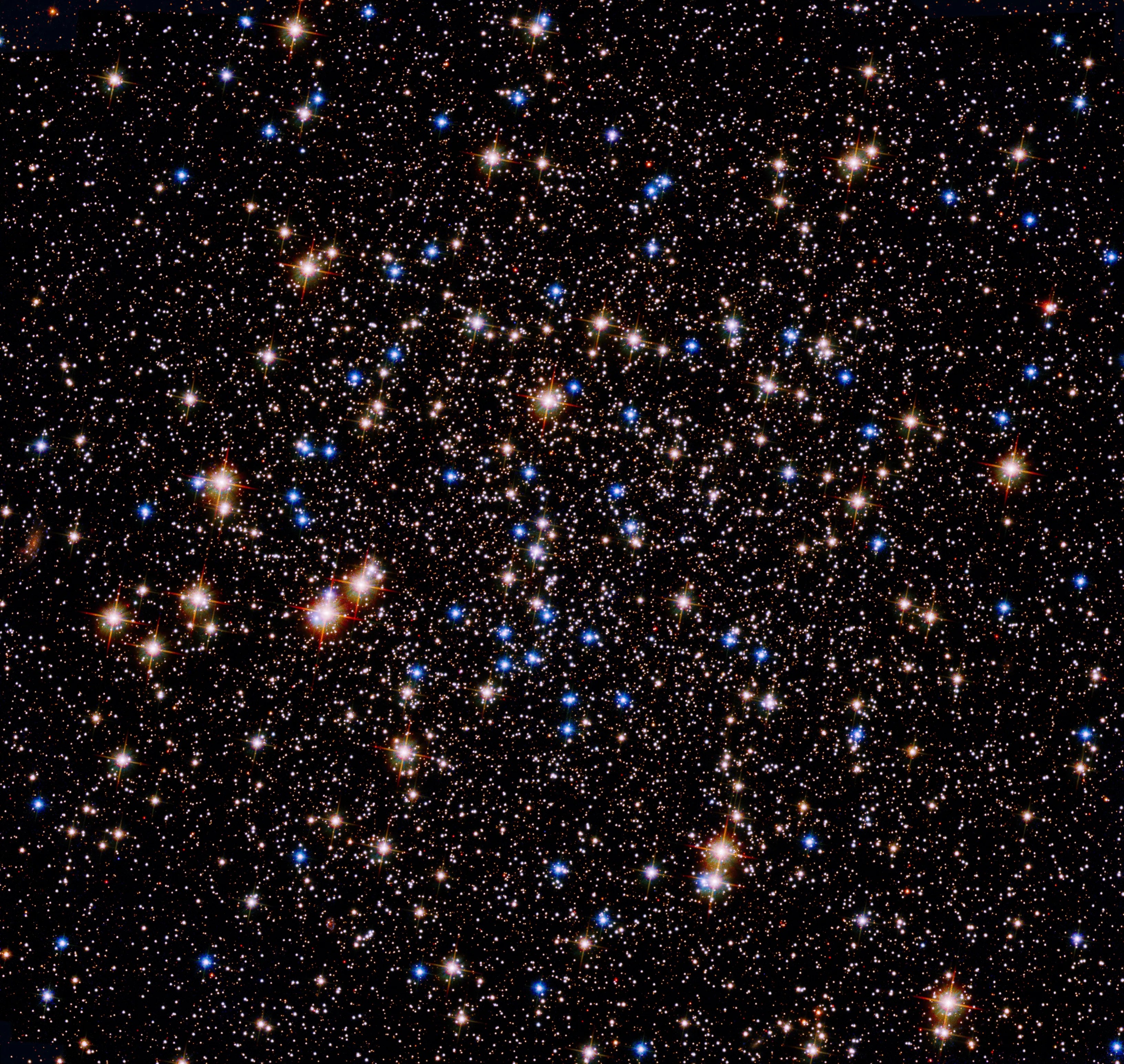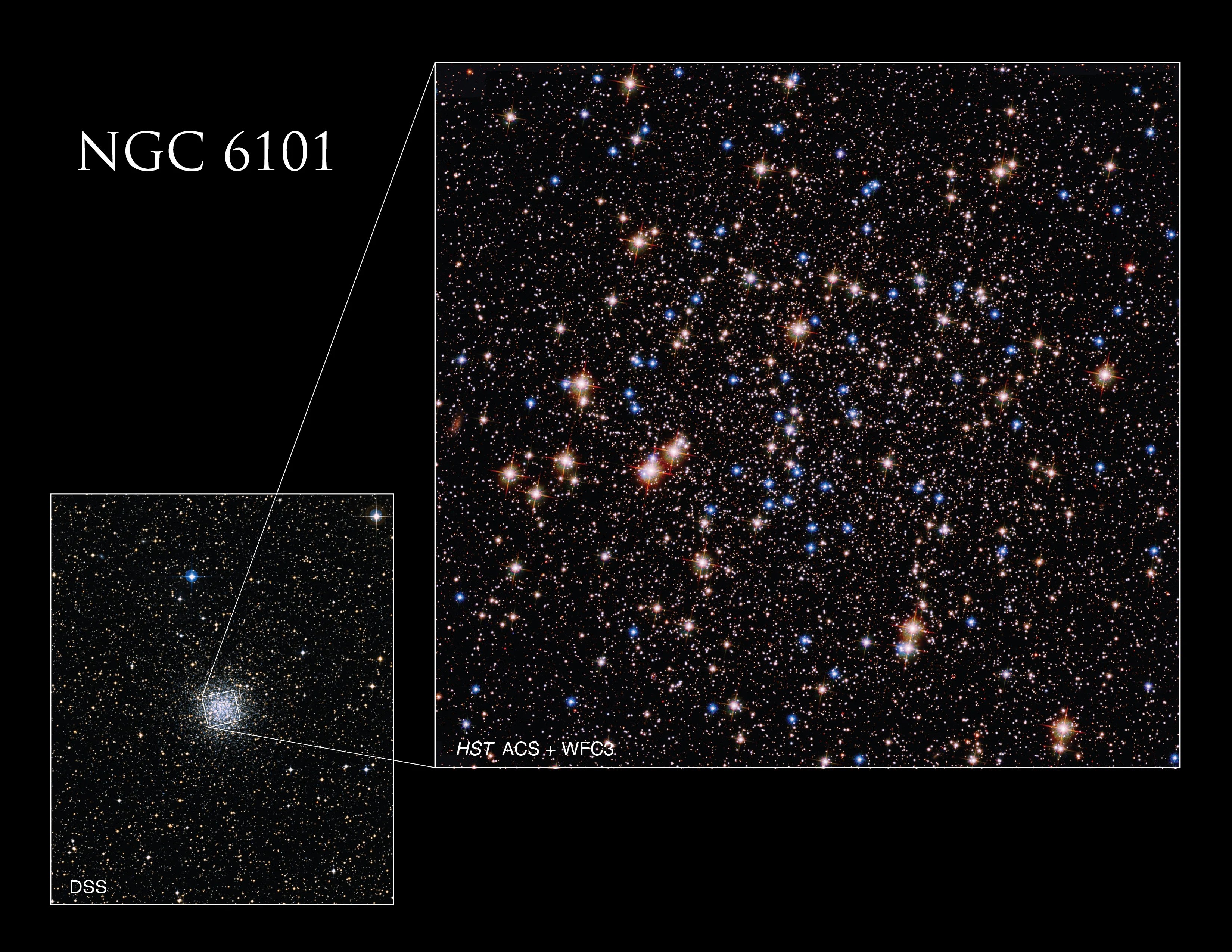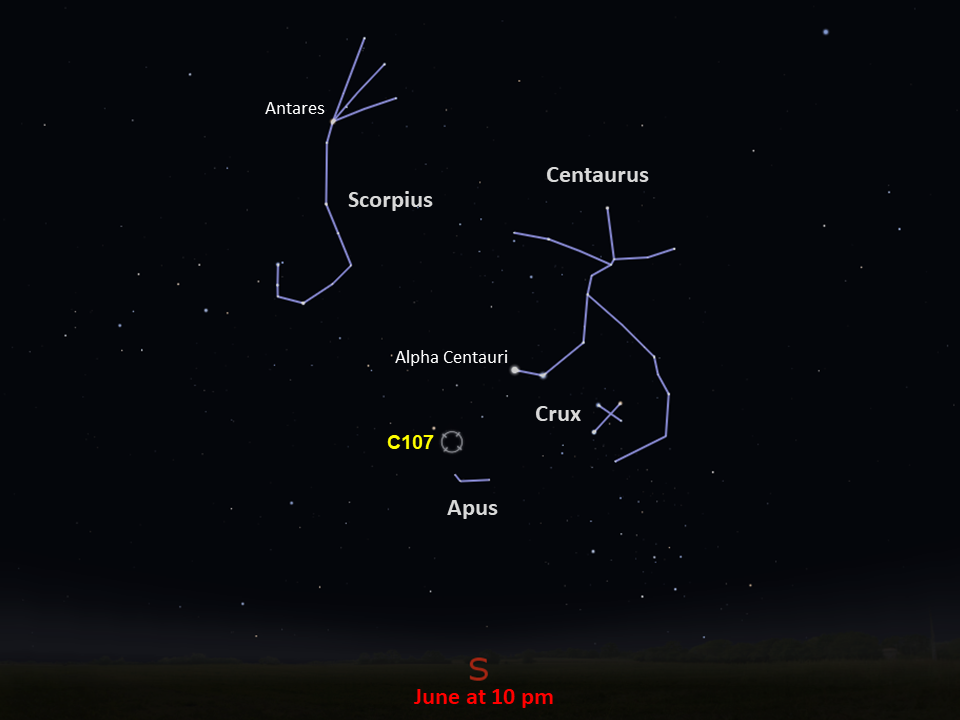Caldwell 107
This loosely-packed cluster of stars was first observed in 1826 by Scottish astronomer James Dunlop.
Distance
50,000 light-years
Apparent Magnitude
10.6
constellation
Apus
object type
Globular Cluster

In the past, astronomers thought globular star clusters were made up of stars that have similar ages and similar chemical abundances. However, recent studies suggest that it might not be that simple. It seems as though many globular clusters contain stars with different chemical abundances, suggesting that they host multiple populations of stars born at different times.

This image of the globular cluster Caldwell 107, or NGC 6101, combines observations taken in visible, infrared, and ultraviolet light by Hubble’s Wide Field Camera 3 and its Advanced Camera for Surveys. The stars in Caldwell 107 are more loosely packed than those in other globular clusters, which usually have dense, compact cores. Astronomers observed Caldwell 107 with Hubble to study and characterize the multiple populations within the cluster.
Caldwell 107 was first observed in 1826 by the Scottish astronomer James Dunlop, who lived in Australia for many years. Astronomer John Herschel, who observed the cluster in the 1830s, described the cluster as being large, faint, round, and only a little brighter in the middle. The cluster is easiest to spot during the winter from the Southern Hemisphere. Caldwell 107 has an apparent magnitude of 10.6 and is located roughly 50,000 light-years from Earth in the constellation Apus. A mid-sized telescope is needed to resolve some of the cluster’s individual stars.

Glossary
Apparent Magnitude - The brightness of an astronomical object as seen from Earth, influenced by the object's distance from Earth, its absolute magnitude, and even gas and dust that lie between the object and Earth.
Globular Cluster - A spherical group of stars that are gravitationally bound to each other, with most of the stars concentrated at the cluster’s center.
Explore Hubble's Caldwell Catalog
The following pages contain some of Hubble’s best images of Caldwell objects.

Caldwell 1
Also known as NGC 188, this group of stars formed from a large cloud of gas making the stars roughly…

Caldwell 2
This shell of gas is expanding outward, away from the dying star within.

Caldwell 3
This barred spiral galaxy was first spotted by British astronomer William Herschel in April 1793 in the constellation Draco.




